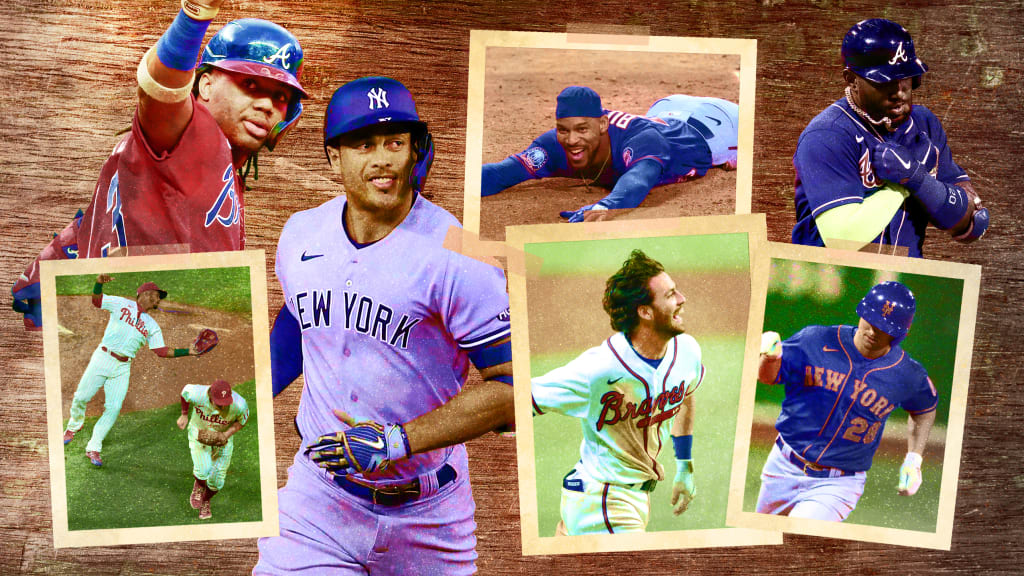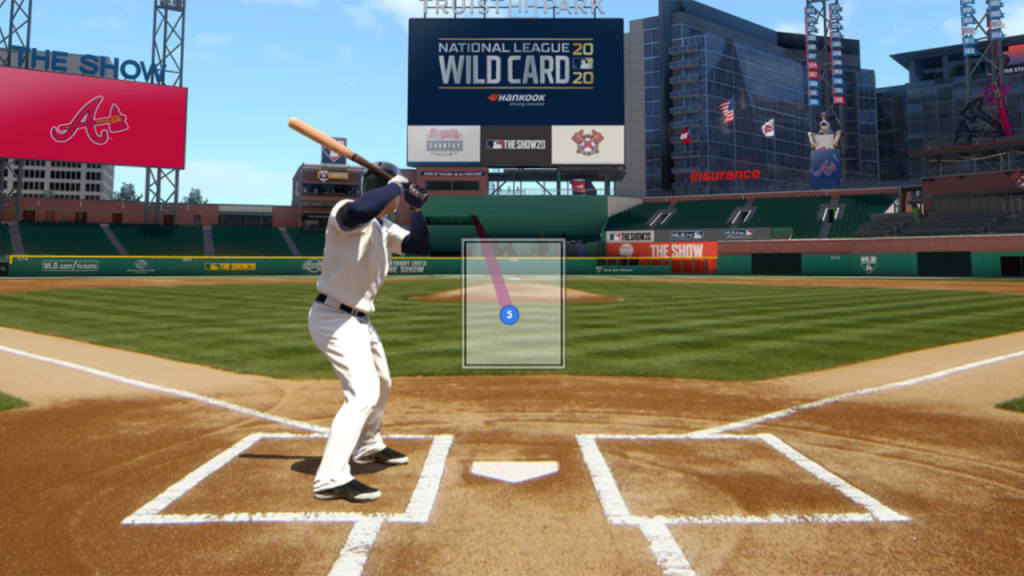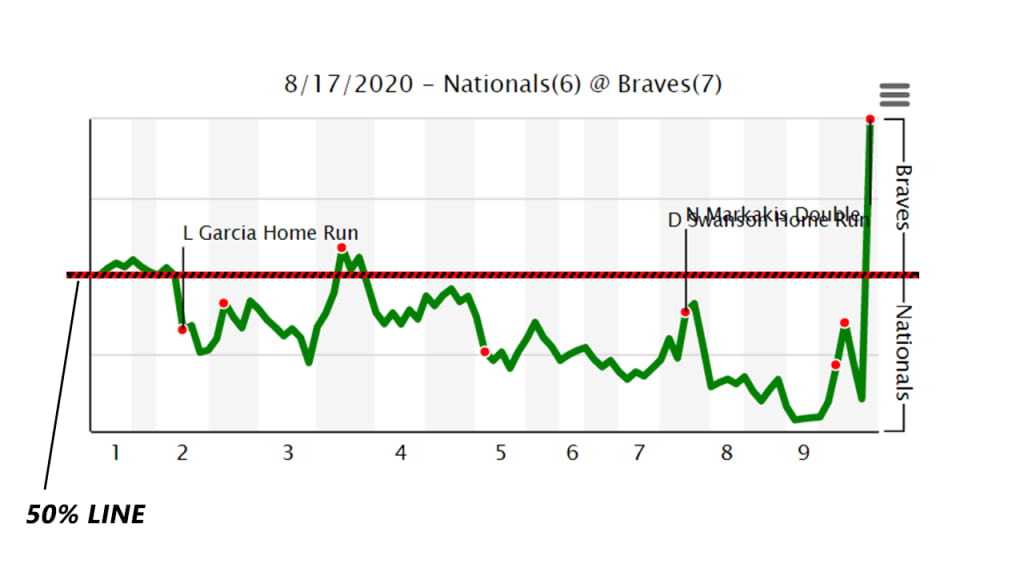
2020 was a year you'll never forget, yet hope to never remember. (Unless, of course, you're a Dodgers fan.) Still, despite the fact that it was a mere 60-game season, there were more than a few incredible moments. Here were nine of our favorites.
The hardest-hit ball of the year: 121.3 mph
Giancarlo Stanton, July 25
You might remember this one, because it looked every bit like it was 121.3 mph and then some, as Stanton mashed a middle-middle 92.1 mph fastball from Erick Fedde a projected 483 feet into deep left field. It was his second homer in two games to begin the season, having also taken Max Scherzer deep on Opening Night. (“It's a good couple of nights,” said Stanton. “I feel locked in and have a good approach. I've got to continue that.”)
There's only so much to say about "Giancarlo Stanton mashes a baseball," but it's just another line item that proves no one alive -- not Aaron Judge, not Vladimir Guerrero Jr., not Pete Alonso, not anyone -- hits the ball with as much malicious intent as Stanton does. In the six years of Statcast tracking, Stanton has 21 of the 30 hardest-hit balls, despite how much time he's missed due to injury.
He's also had the hardest-hit ball of the year every single season.
We'll not be accepting any bets on who is going to have 2021's hardest-hit ball, though this does seem to prove that 122 is about as hard as any human can hit a pitched baseball, given how consistent these numbers have been over the six seasons we have tracking on it.
Interestingly enough, in three of the past five years, the hardest-hit ball of the season came either on Opening Day or extremely close to it. That seems to have less to do with early season trends and more to do with simply "when Stanton is healthy."
The longest home run of the year: 495 feet
Ronald Acuña Jr., Sept. 25
No disrespect to Red Sox rookie Chris Mazza, who did his best to try to help reinforce a tattered Boston pitching staff, but you can't really leave an 88.9 mph cut fastball here to one of baseball's most dangerous hitters.

“That's probably the longest one I've seen here in this ballpark,” Braves manager Brian Snitker said. “It was just, 'Oh my God.’”
He's not wrong. It's the longest home run hit at Truist Park, which opened in 2017. It's the longest home run hit by a Brave since tracking began in 2015, and just for the sake of being complete, it's longer than any home run allowed by a Braves pitcher in that span, too.
Let's do the same thing as we did with Stanton, actually, and list out the longest homers of each season.
Here, we seem to have established an upper bound as well, especially considering that Mazara's was wind-aided and Stanton's and Taylor's each came at Coors Field. Home runs in a game situation top out just north of 500 feet, unless someone's going to hit one with a hurricane-force wind behind them. Keep that in mind when you hear stories about Babe Ruth supposedly blasting one 587 feet, and Mickey Mantle supposedly hitting one 565 feet.
The home run everyone wanted to be the longest of the year
Marcell Ozuna, 437 feet, Sept. 1
Let's talk about the year's most divisive home run. Though the switch from the previous Statcast hardware to the new version powered by Hawk-Eye went very smoothly -- it led to a nearly 100% rate of tracked batted balls, a marked improvement -- this was the one that stuck with everyone, because, well, just look at it.
But while the 110.6 mph exit velocity was certainly impressive, the projected 437 feet left everyone feeling unsatisfied. It wasn't even the longest of his three homers in the game. So what happened here?
Ozuna smashed the ball, obviously, but to a part of Fenway Park that has an angled fence. Since it hit the catwalk above the center-field seats, and everyone knows that center field in Fenway is 420 feet deep, that led to some misconceptions. That's because the deepest part of the triangle in right-center is 420 feet, while center field itself is actually 390. This blast didn't go over the deep triangle, or really anywhere near it. It went just to the right of the Green Monster.
So in reality, it actually hit a part of the park that was approximately 412 feet away from home, and it was projected to have another 25 feet behind it after that if it had been allowed to go all the way to the ground. That sounds about right. It's a blast either way.
The softest hit home run of the year: 89.4 mph
Brett Phillips, July 27
That's right, this is definitely the Brett Phillips moment from 2020 you will remember the most. No competition here. No question about it.
Before Phillips was traded to Tampa Bay to become a World Series hero, he started the year with the Royals, for whom he hit exactly one (1) home run in 2020. That one came in the ninth inning of what would be a blowout 14-6 Royals win on July 27, a game where Kansas City would slam six dingers against Detroit.
A home run coming off the bat at under 90 mph is actually quite rare -- it only happened twice in 2020, and the other one came when José Ramírez ever so barely snuck one inside the right-field foul pole. Dating back to 2015, there have been more than 31,000 home runs, and a mere 67 -- or 0.2% -- have been hit at 90 mph or under. (And it's really less than that because a handful of those are inside-the-parkers anyway.)
The least likely hit of the year: .007 Expected Batting Average
Pedro Severino, Aug. 11
As usual, there's a tie in this category, because every season, there's a handful of no-doubt outs that turn into hits -- but not, crucially, errors -- because of defensive hilarity. Here, for example, are four Padres watching a popup fall for a single in front of the mound. Here's Austin Meadows being gifted with a single because Starling Marte lost the ball in the white roof of Tropicana Field.
You're free to choose from any of them, but we're going with this Severino popup because the game situation made it the most excruciating of all. Let's set the scene: It's the ninth inning, tied 6-6. The bases are loaded. There's two outs. Phillies closer Héctor Neris has already blown the 6-5 lead he was handed, and he's trying not to blow the game entirely. He succeeds, getting Severino to pop up. Except ...
... first baseman Rhys Hoskins, who had settled under it, was called off by third baseman Jean Segura, who then stumbled across the mound and allowed the ball to land for a hit, scoring two runs. "We saw some stuff tonight that usually you definitely don’t see,” Hoskins said. “Some stuff that I’ve never seen on the field.”
We talked a lot this year about how historically poor the Phillies' bullpen was, and they were, but they didn't get there without help. Because no error was charged on the play, Neris was charged with two earned runs on what should have been an-inning-ending popout. (Hilariously, the insanity wasn't finished. The Phillies would tie it in the bottom of the ninth, then lose in the 10th on an inside-the-park two-run homer.)
The least likely home run of the year: Out in 1/30 ballparks
J.D. Davis, July 28
This one is also "the shortest non-inside-the-park" dinger of the year, at all of a projected 328 feet, which is why we're picking it over a handful of other homers that also only would have gone out in a single ballpark (based on the wall heights and distances around each of the ballparks.) This one could have only gone out in Fenway, and only in that part of Fenway; in fact, that combination of exit velocity and launch angle is only even a hit about 20% of the time.
In case you're wondering how short 328 feet is, note that Boston center fielder Jackie Bradley Jr. positioned himself an average of 326 feet deep this year. If Davis had hit that one straight, it's just another F8 you'd never, ever think about again. Instead, it was his first home run of the year.
The most important play of the regular season: +89.4% Win Probability Added
Dansby Swanson, Aug. 17
By the time the Braves got to the bottom of the ninth on Aug. 17 against Washington, things weren't going terribly well. Starter Touki Toussaint had lasted only three innings -- walking six and allowing four runs -- and in the ninth inning, Juan Soto's home run had made it a 6-3 deficit for Atlanta. Adam Duvall's two-run home run cut that to 6-5, but after Adeiny Hechavarria and Ender Inciarte failed to advance Johan Camargo's single, Swanson came up with two outs, down one, with one on.
The win probability at that point -- based on the game situation in terms of outs, inning, score, and runners on -- was 11%. That's another way of saying that teams in that situation, being down by one in the bottom of the ninth with two outs and a runner on first, manage to win once in every 10 tries. "Once in every 10" is not "zero in every 10," importantly, and this was one of those times. Swanson bashed a walk-off home run and jumped that 11% win probability to 100%, i.e., the game was over. Just look at how that seems visually, per FanGraphs:

It was the biggest win probability swing of the 2020 regular season (obviously, there were far greater ones in October) and Atlanta's largest since a 2012 Chipper Jones walk-off homer, which was a +85.8% win probability swing. For Swanson, it was his first career walk-off homer, and he gave some of the credit to Duvall, saying that "to be able to discuss what pitches he saw when he was at the plate, it’s great to have a relationship with a guy you trust what they saw and what you can take into your at-bat.”
The hardest outfield throw for an assist: 96.9 mph
Kevin Kiermaier, Sept. 26
Personally, we'd prefer to just show the hardest overall throws -- this year, that was topped by this 101.2 mph cannon from Adolis Garcia of Texas and this 100 mph throw from Kansas City's Bubba Starling -- but neither were on target or turned into outs, so let's focus on the hardest one that actually mattered.
It's not like we've never seen Kiermaier do this before; he's hit 100 mph a handful of times in the past. In this one, at the moment Kiermaier picked up J.T. Realmuto's single, he was 291 feet from home plate. Meanwhile, runner Andrew McCutchen still hadn't rounded third base -- he was 22 feet away. Kiermaier's one-hopper reached catcher Mike Zunino in 3.9 seconds, by which point McCutchen was still eight feet short of the plate. Should McCutchen have been held up at third, given that he was still not yet to the base? Perhaps. But this was also clearly a case where the Phillies dared Kiermaier to make a perfect throw, and he did just that.
The fastest home-to-home run: 14.5 seconds
Byron Buxton, Sept. 15
The surprise isn't that Buxton had 2020's fastest time to circle the bases, because he had the fastest time in 2016 and '17, too. The fun part is that he actually had the two fastest times around the bases this year. On Sept. 15, he got around for that home run in 14.5 seconds, but the day before, he managed it in a nearly-as-fast 14.9 seconds.
Problem is, that one went down as a double, because ... well, just watch -- and note that he pretty clearly slows from top speed between first and second.
Dating back to 2015, Buxton has three of the four fastest home-to-home times. (Dee Strange-Gordon, back in '15, has the fourth.) This might not be quite as much as a clean sweep as Stanton topping the hardest-hit ball leaderboard every year, but it's not that far off, either. We know who we'll be watching in 2021.
